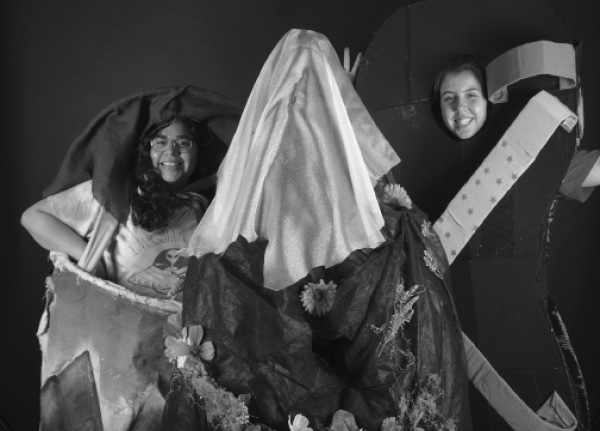
HIGH COUNTRY SPRING PROCESSION
first performed on February 1, 2017
Community Workshops, Downtown Boone, NC
performed once in 2017
JENNIE CARLISLE / ED WOODHAM
Boone, NC / Brooklyn, NY
167959198c167959198a167959198r167959198l167959198i167959198s167959198l167959198e167959198j167959198k167959198@167959198a167959198p167959198p167959198s167959198t167959198a167959198t167959198e167959198.167959198e167959198d167959198u
jenniecarlisle.com/ strangemakings.com
HIGH COUNTRY SPRING PROCESSION
JENNIE CARLISLE / ED WOODHAM
“High Country Spring Procession” (HCSP) was a community art parade organized with the town of Boone, NC commissioned by Appalachian State University. Conceived just after the 2016 elections, at a time when rural communities across Appalachia were being described in national media as places of moral decline, racism, and social phobia of every kind, HCSP challenged this narrative and provided participants with an opportunity to perform their own relationships to their rural mountain home, its landscape, histories, and lore.
For five months, more than 300 people participated in workshops held at the university, in K-12 classrooms, and in community organizations. We particularly sought to include groups left out of dominant stories about the community: non-white people, people with progressive politics, students, migrant workers, LGBTQIA individuals, and a host of cultural others. All participating groups conducted research and made costumes, banners, and puppets according to their own interests and abilities.
The day of the parade, children from a hispanic mobile home community, wearing funny hats representing their favorite foods, mixed with teenagers in capes designed to express their queer superpowers. They mixed with seniors, who carried images of loved ones buried in the historically black section of the town cemetery, and they mixed with university students in costumes representing local mountain ranges. It was boisterous, fun, and deeply accepting.
To our surprise, the capacity of our parade for convivial connection, spontaneous performance, and self-representation grew rather than diminished when the event was forced indoors because of rain. As its form evolved from a parade into a happening, HCSP became a more pointed exercise in community self-seeing.
Moments of party gave way to moments of procession. Groups promenaded their costume creations for each other on a makeshift runway. Music and dance intended for the parade route became focal performances, and a potluck, planned for after the event, became a central feature of the project as an expression of community sharing.HCSP was given a open, responsive structure designed to authorize participants to shape the project’s content. This same structure also allowed for the project to shift form as the situation required.
When we began, we could not predict what we would create together. This is the magic of the project. It turned on surprise, collective trust, and an ethos of generosity that allowed us to make sense of the project and its possibilities as it unfolded around us.